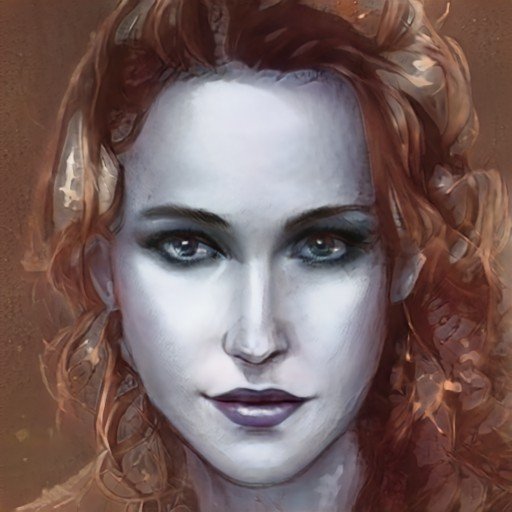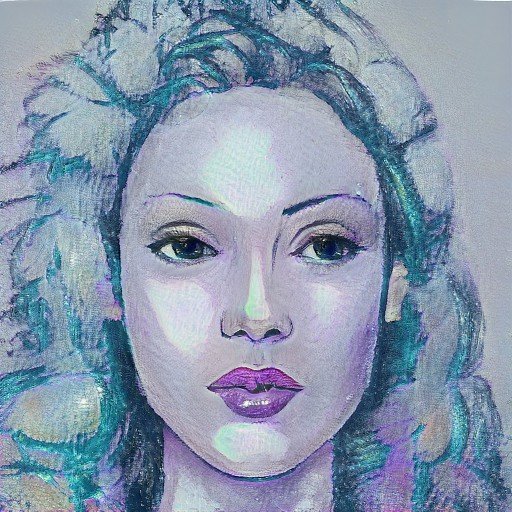Suracity ([soor-AH-sit-ee])
From Academic Scholarship to Religious Cult
They claim wizards have oppressed them, but then they have their own hierarchy of magic. But I don't suppose cults ever made much sense.
We will create a world of true equality, one where magic belongs only to those who have earned it.
History
Suracity was founded in 1387 by Rotita Tyinagra, a Brekkan magicologist with no natural gift. Tyinagra was actually one of the first people to widely promote the idea that Magic could be learned and used by anyone, regardless of natural gifts. She started Suracity as an academic community in which people, primarily those without natural gifts, could practice and study together to improve their understanding and use of magic. The writings of Rotita Tyinagra remain important in the world of magicology and serve as a foundation for other organizations which promote teaching magic to those who do not have natural gifts. At this time, the organization was not religious, though Tyinagra herself believed in the Calistian gods and believed that communicating with them could help improve one's magical abilities.
The first major change in the direction of the organization came immediately after Tyinagra's death in 1443. Her successor, Agripa Pilipo, not only pushed for increased worship of the Calistian gods, but also believed that they could be summoned to Nideon, so that someone might channel their power. He secretly hoped to one day bind a god in order to take its power completely, though he died in the attempt.
By 1555, the order had developed a strong religious bent, centered around a new belief in the Calistian gods. Clergy proselytized primarily to those who did not have magic, convincing them that if they joined, they could gain it. This lead to new magical practices with mixed results. Many practitioners claimed to have successfully summoned Calistian gods, and the spread of these stories saw the religion itself spread.
In 1711, the Brekkan chapter officially closed itself to anyone with a natural gift of magic, also severing its ties with Suracity groups which refused to do so. The new, charismatic leader, Tyari Laurtin, told members that they were being oppressed by those with magical gifts, in particularly the Mermish and Mun, and grew her following from disgruntled, poor humans, primarily from rural areas of Brek. She convinced them that Suracity would one day lead the world into a new world order.
Despite Laurtin's claims, Suracity remained a fringe group for the next two centuries and gained little traction until turn of the century politician Cate Gleityir acknowledged them. Though there is no evidence that Gleityir actually believed any of their teachings, she publicly promoted their push for "equality," hoping it would gain her political traction. Despite the fact that Gleityir was herself a natural born dream wizard, the Suraci rallied behind her. Since then, their political power has grown, and they are now seen by many as a dangerous radical group that regularly spreads misinformation.
Beliefs
Though the religion of Suracity is founded on the myths of the Calistian gods, a broader web of beliefs has sprung up, mostly surrounding the writings of Tyari Laurtin, though also following teachings of previous leaders. Laurtin truly expanded the group into a religion, by creating a meritocracy out of the organization. Laurtin taught of an afterlife consisting of concentric realms, which one earned their entry into. Those in the center circle were to be the most honored of all people, and everyone in the outer rings would bow to them as if they were kings. Laurtin also proposed creating this meritocracy on Nideon, and that this was what the Suraci were destined to do.
Clergy
As the organization did not begin as a religious one, leaders were typically referred to as teachers. Though Suracity leaders now also serve as clergy people, they are still usually referred to as teachers. Clergy not only serve as magical teachers, but also as political diplomats, choosing the political leaders their followers should support. They are the gatekeepers of information--if the clergy say it is true, it is. Otherwise, someone is lying.
Suracity clergy are usually, though not always, female. It is unclear if this is because the organization itself is matriarchal or because women seem to be more successful at calling gods to Nideon. After all, most clergy are those who have successfully summoned a Calistian god, and the more gods a person has summoned, the higher they are in the hierarchy. There are, however, some clergy who have not successfully summoned gods, yet are powerful enough magically to have been promoted by higher clergy.
Clergy are generally recognized by their tattoos. When a person successfully summons a god to Nideon, they have a symbol representing that god tattooed on their body. Those who have been physically hurt by failed attempts rarely try to hide their scars, as these are seen as signs of how close they have come and of their great magical power. Though lay people have mixed abilities when it comes to magic, clergy are truly powerful.
Relationship with Other Religions
Suracity leaders teach that they and only they contain true knowledge of the gods, magic, and the afterlife, and those who entertain other beliefs of any sort will surely live for eternity in the outermost circle of the afterlife, among traitors and nonbelievers. This circle is viewed as a realm of disorder and anarchy. There is no official stance on deities other than the Calistian gods, though Laurtin's writings seem to imply that the Calistian gods are lesser beings who stand below a greater Judge who will determine everyone's place in the meritocracy. This Judge is also implied as the being who gave Suracity its purpose in creating the meritocracy on Nideon. The Judge is different from the Calistian gods in that they cannot be summoned to Nideon, and to attempt would lead to a fate worse than death. Laurtin's writings also indicated that she followed Pilipo's beliefs that the Calistian gods could be bound, and that if one were to accomplish such a feat, the Judge would strip the bound god of all power and bestow it upon the binder, promoting them to the position of god.
Though the religion of Suracity is founded on the myths of the Calistian gods, a broader web of beliefs has sprung up, mostly surrounding the writings of Tyari Laurtin, though also following teachings of previous leaders. Laurtin truly expanded the group into a religion, by creating a meritocracy out of the organization. Laurtin taught of an afterlife consisting of concentric realms, which one earned their entry into. Those in the center circle were to be the most honored of all people, and everyone in the outer rings would bow to them as if they were kings. Laurtin also proposed creating this meritocracy on Nideon, and that this was what the Suraci were destined to do.
Clergy
As the organization did not begin as a religious one, leaders were typically referred to as teachers. Though Suracity leaders now also serve as clergy people, they are still usually referred to as teachers. Clergy not only serve as magical teachers, but also as political diplomats, choosing the political leaders their followers should support. They are the gatekeepers of information--if the clergy say it is true, it is. Otherwise, someone is lying.
Suracity clergy are usually, though not always, female. It is unclear if this is because the organization itself is matriarchal or because women seem to be more successful at calling gods to Nideon. After all, most clergy are those who have successfully summoned a Calistian god, and the more gods a person has summoned, the higher they are in the hierarchy. There are, however, some clergy who have not successfully summoned gods, yet are powerful enough magically to have been promoted by higher clergy.
Clergy are generally recognized by their tattoos. When a person successfully summons a god to Nideon, they have a symbol representing that god tattooed on their body. Those who have been physically hurt by failed attempts rarely try to hide their scars, as these are seen as signs of how close they have come and of their great magical power. Though lay people have mixed abilities when it comes to magic, clergy are truly powerful.
Relationship with Other Religions
Suracity leaders teach that they and only they contain true knowledge of the gods, magic, and the afterlife, and those who entertain other beliefs of any sort will surely live for eternity in the outermost circle of the afterlife, among traitors and nonbelievers. This circle is viewed as a realm of disorder and anarchy. There is no official stance on deities other than the Calistian gods, though Laurtin's writings seem to imply that the Calistian gods are lesser beings who stand below a greater Judge who will determine everyone's place in the meritocracy. This Judge is also implied as the being who gave Suracity its purpose in creating the meritocracy on Nideon. The Judge is different from the Calistian gods in that they cannot be summoned to Nideon, and to attempt would lead to a fate worse than death. Laurtin's writings also indicated that she followed Pilipo's beliefs that the Calistian gods could be bound, and that if one were to accomplish such a feat, the Judge would strip the bound god of all power and bestow it upon the binder, promoting them to the position of god.
Suracity leaders teach that they and only they contain true knowledge of the gods, magic, and the afterlife, and those who entertain other beliefs of any sort will surely live for eternity in the outermost circle of the afterlife, among traitors and nonbelievers. This circle is viewed as a realm of disorder and anarchy. There is no official stance on deities other than the Calistian gods, though Laurtin's writings seem to imply that the Calistian gods are lesser beings who stand below a greater Judge who will determine everyone's place in the meritocracy. This Judge is also implied as the being who gave Suracity its purpose in creating the meritocracy on Nideon. The Judge is different from the Calistian gods in that they cannot be summoned to Nideon, and to attempt would lead to a fate worse than death. Laurtin's writings also indicated that she followed Pilipo's beliefs that the Calistian gods could be bound, and that if one were to accomplish such a feat, the Judge would strip the bound god of all power and bestow it upon the binder, promoting them to the position of god.

Calistian language
The so-called Calistian language was actually invented by Rotita Tyingara who believed that she had unlocked the language with which she could directly commune with the Calistian gods. Earlier Calistian myths, however, bear no mention of a Calistian language, or of the Calistian gods having a specific language in which they communicate. Use of the Calistian language to channel and stabilize magical workings, however, continues to this day.
Founding Date
1387
Type
Religious, Cult
Demonym
Suraci
Leader
Leader Title
Deities

by Artbreeder

by Artbreeder

by Artbreeder


Comments